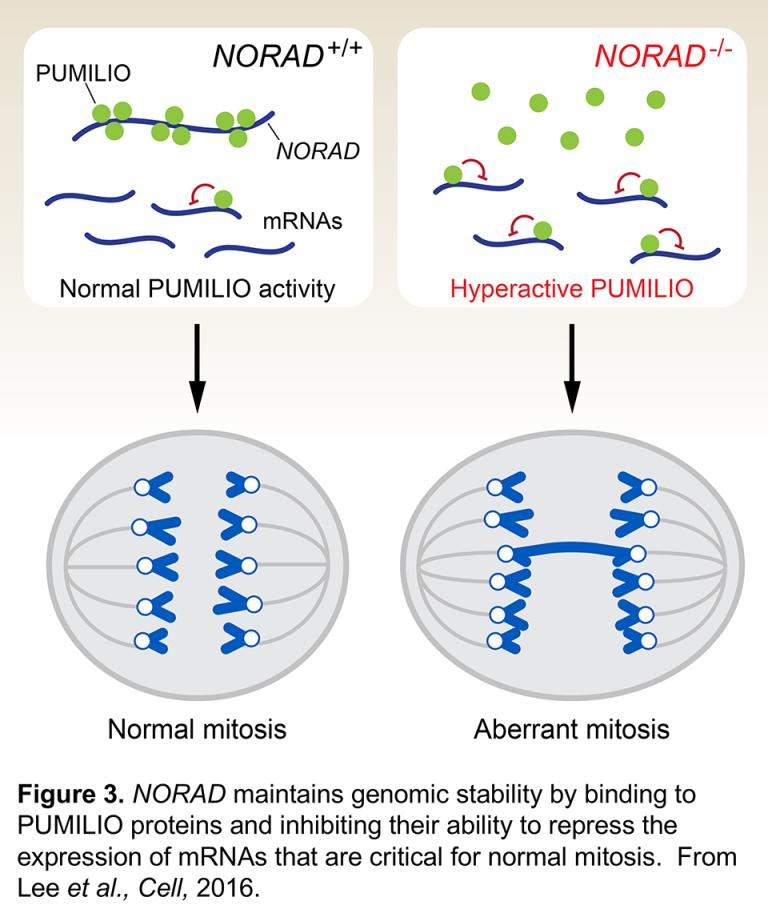Functional dissection of long noncoding RNAs
In addition to miRNAs, it is now appreciated that many other types of noncoding RNAs have important roles in development and disease. Analogous to our earlier studies of the miRNA pathway, we are currently exploring the biology of long noncoding RNAs (lncRNAs) and their diverse functions. For instance, we recently discovered a remarkable lncRNA that we termed Noncoding RNA Activated by DNA Damage or NORAD (Lee et al., Cell, 2016). NORAD is highly conserved and abundant in mammals, with expression levels of approximately 500-1,000 copies per cell. Surprisingly, inactivation of NORAD triggers dramatic aneuploidy in previously karyotypically-stable cell lines. NORAD maintains genomic stability by sequestering PUMILIO proteins, which repress the stability and translation of messenger RNAs to which they bind. In the absence of NORAD, PUMILIO proteins drive chromosomal instability by hyperactively repressing mitotic, DNA repair, and DNA replication factors (Figure 3). These findings introduced a new mechanism that regulates the activity of a deeply conserved and highly dosage-sensitive family of RNA binding proteins and revealed unanticipated roles for a lncRNA and PUMILIO proteins in the maintenance of genomic stability. We are continuing to study the function of NORAD and other lncRNAs using cellular and animal models as well as performing screens to identify new lncRNAs with important roles in normal physiology and disease.
